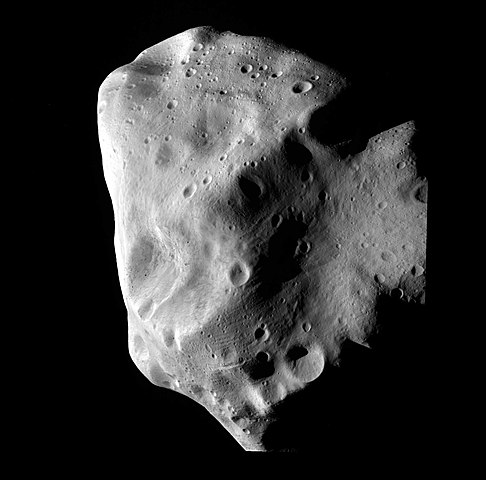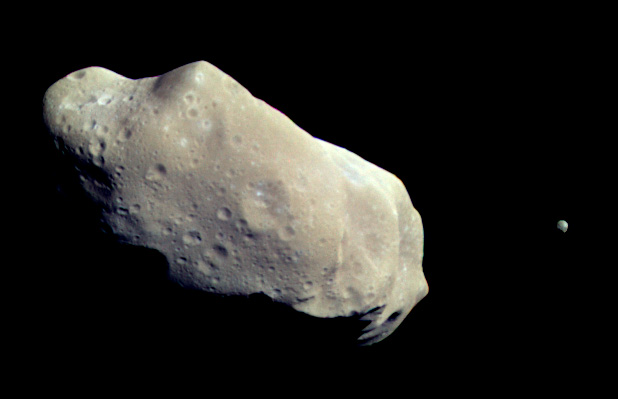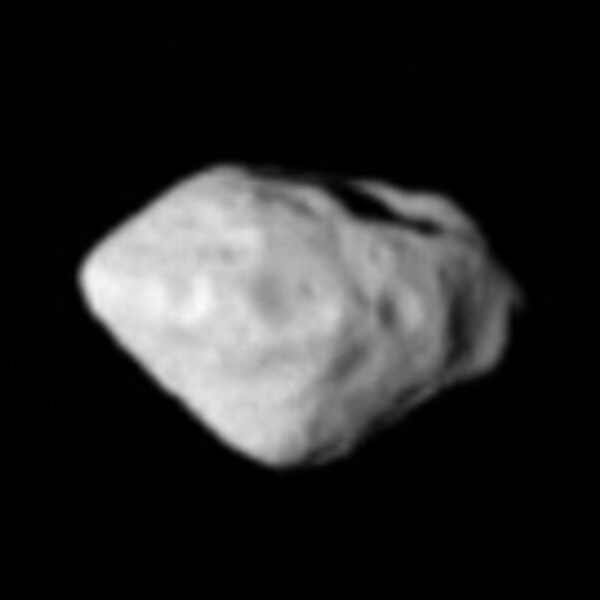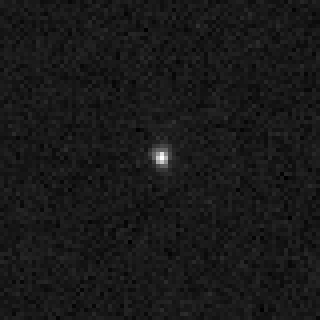1 day / second
0.5 AU
433 Eros
Asteroid
A potato-shaped near-Earth asteroid roughly 34 kilometers long that became the first asteroid to be orbited and landed on by a spacecraft during the NEAR Shoemaker mission in 2000-2001.
Key Facts
orbital regime | Inner System |
learn more | Wikipedia |
mass | 6.6870e+15 kg |
radius | 8.42 km |
hill radius | 1,761.27 km |
semi-major axis | 1.458 AU |
eccentricity | 0.223 |
inclination | 10.828º |
longitude of the ascending node | 304.32º |
argument of periapsis | 178.82º |
orbital period | 1.76 years |
surface gravity | 0.001 g |
discovery date | August 13, 1898 |
discovered by | Carl Gustav Witt at Berlin Observatory, and independently by Felix Linke |
name origins | Named after Eros, the Greek god of love |
dimensions | 16.84 kilometers in diameter |
albedo | 0.25 |
material composition | S-type asteroid (siliceous/stony composition) |
density | 2.67 g/cm³ |
Spacecraft Visits
NEAR Shoemaker
Orbiter
Launched in 1996, entered orbit in 2000
NEAR Shoemaker became the first spacecraft to orbit and land on an asteroid, studying Eros for over a year before touching down on its surface on February 12, 2001.










